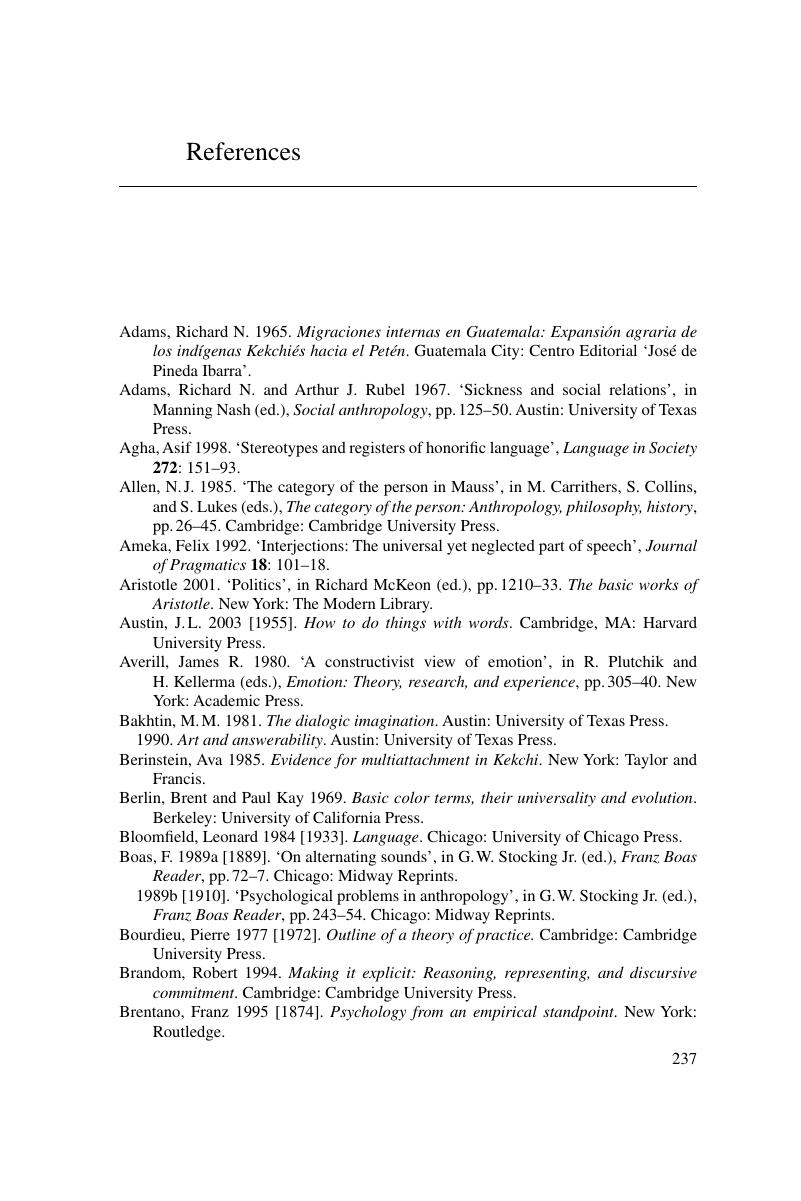Book contents
- Frontmatter
- Contents
- List of illustrations
- Acknowledgements
- 1 Language, culture, mind: emblems of the status human
- 2 Inalienable possessions: what hearts, mothers, and shadows have in common
- 3 Interclausal relations: how to enclose a mind by disclosing a sign
- 4 Myths about time and theories of mind: why the moon married the sun
- 5 Other minds and possible worlds: when psychological depth is dialogical breadth
- 6 Interjections: why the centre of emotion is at the edge of language
- 7 Conclusion: natural constructions and social kinds
- Appendix A Transcription conventions
- Appendix B The Marriage between the Sun and the Moon
- References
- Index
- References
References
Published online by Cambridge University Press: 04 May 2010
- Frontmatter
- Contents
- List of illustrations
- Acknowledgements
- 1 Language, culture, mind: emblems of the status human
- 2 Inalienable possessions: what hearts, mothers, and shadows have in common
- 3 Interclausal relations: how to enclose a mind by disclosing a sign
- 4 Myths about time and theories of mind: why the moon married the sun
- 5 Other minds and possible worlds: when psychological depth is dialogical breadth
- 6 Interjections: why the centre of emotion is at the edge of language
- 7 Conclusion: natural constructions and social kinds
- Appendix A Transcription conventions
- Appendix B The Marriage between the Sun and the Moon
- References
- Index
- References
Summary

- Type
- Chapter
- Information
- Language, Culture, and MindNatural Constructions and Social Kinds, pp. 237 - 244Publisher: Cambridge University PressPrint publication year: 2010

